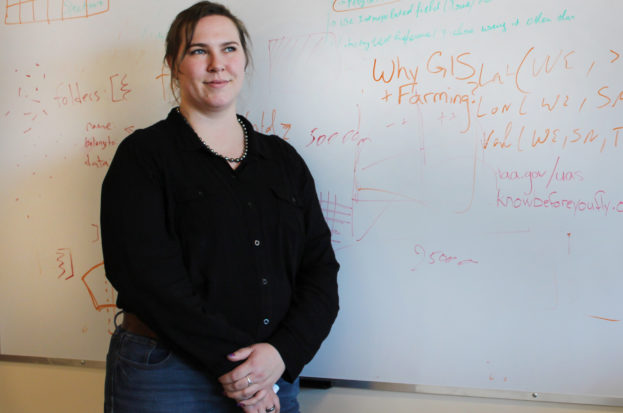Geography alumna, Sarah Lepp (BSc Physical Geography ’13), was recently featured in Niagara College’s Research and Innovation News. Read more below.
Profile: Sarah Lepp

Like many, Sarah Lepp was bored in her high school geography class – not realizing until university that it did not have to be all about memorizing capital cities and world atlases.
While the St. Catharines native had always hiked in Short Hills Provincial Park, the discipline of Physical Geography at Brock gave her fresh eyes and a renewed appreciation for how the landscape was defined tens of thousands of years ago by glaciers and today by the physiographic variations.
She’s the type always inspired by both peculiarities and patterns so it wasn’t surprising she became involved in the study of fluviomorphology, the phenomena of how water carves out a new natural integrity. It would be the first of many proficiencies to come.
“Being out in nature has always and still does make me happy and peaceful; I always wanted everyone to have experiences like this.” It was in an effort to help keep the integrity of the environment that drew her initially to Niagara College some 15 years ago for a diploma in Environmental Technician Field/Lab before her foray into geography for a Bachelor of Science degree.
Yet geographers are a curious bunch; they need to make sense of the world, understand how things change over time and how this knowledge could help others. Still looking to find her own place in the world, Sarah arrived back at NC’s Research & Innovation division a decade ago and worked her way to Senior Research Associate while cultivating her own path.
Through her work at the Agriculture & Environmental Technologies Innovation Centre (AETIC), she has become highly valued in the agricultural industry for her expertise in geographic information systems (GIS), field topography dataset analysis, precision agriculture data quality, and something called phytogeomorphometrics, the study of how plants interact with the land surface (the research team has done extensive work with quantifying landforms and how crop and crop health changes with landform types).
